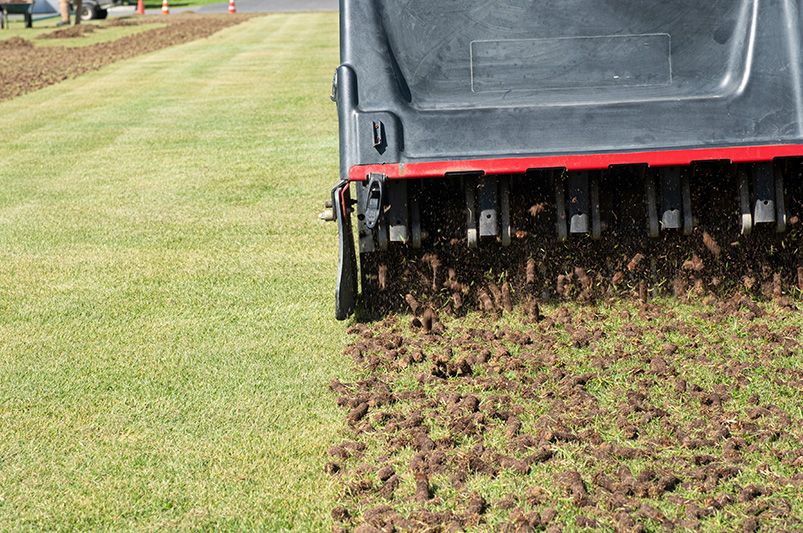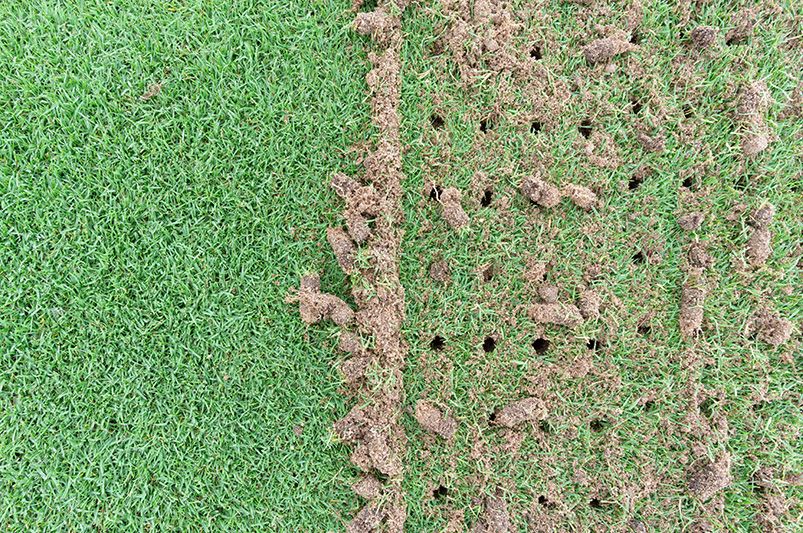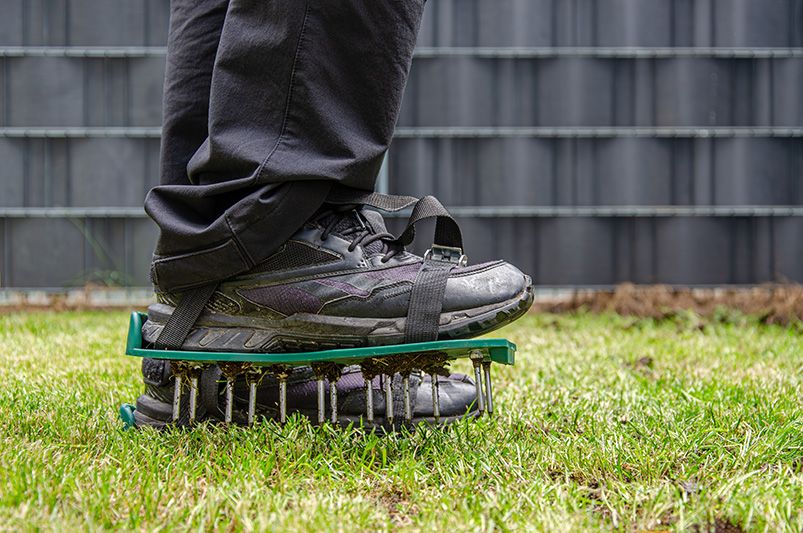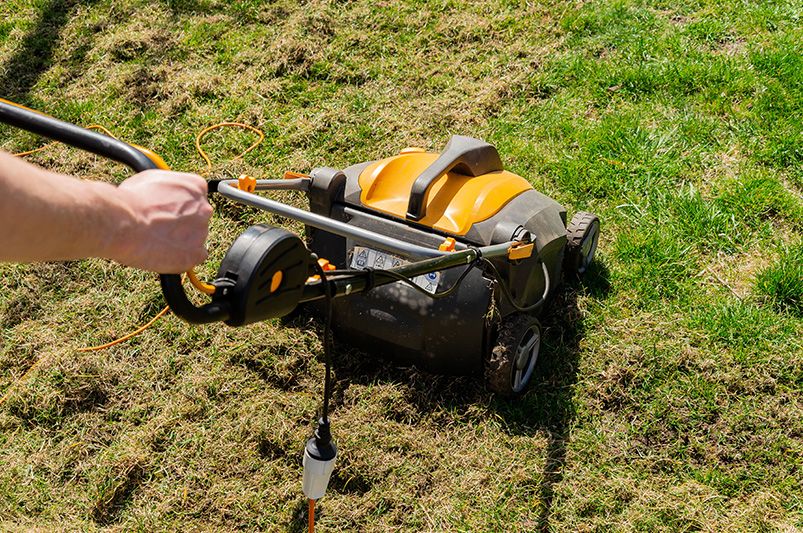
Lawn Aeration Methods to Boost Grass Growth
Published: 21/10/2024 | Updated: 21/10/2024
Lawn Aeration Methods to Boost Grass Growth
Achieving a lush, green lawn isn’t just about watering and mowing—it requires proper care and maintenance to ensure your grass gets the oxygen, nutrients, and water it needs to thrive. One of the most important yet often overlooked steps in lawn care is aeration. Aerating your lawn helps break up compacted soil, allowing water, nutrients, and air to reach the roots more effectively. This process promotes healthier, deeper root growth, resulting in a stronger, more resilient lawn.


Whether you're dealing with dry patches, thinning grass, or poor drainage, aeration could be the key to transforming your yard. At ShrubHub, we know how essential lawn aeration is for long-term lawn health. Keep reading to discover the best ways to aerate your lawn and improve its overall vitality. And don’t forget to check out our weekly blog for more expert tips and in-depth advice on maintaining a healthy, beautiful outdoor space year-round!
What is Lawn Aeration and Why is it Necessary?
Lawn aeration is a process that involves creating small holes in the soil to break up compaction, allowing air, water, and nutrients to penetrate deep into the grassroots. Over time, soil can become compacted due to foot traffic, weather conditions, or even regular lawn maintenance activities like mowing. This compaction prevents grass from accessing the essential elements it needs to grow strong and healthy, often leading to dry patches, thinning grass, and poor drainage.
By aerating your lawn, you create pathways for air to reach the roots, which encourages deeper root development. This results in a lawn that’s more resilient to drought, disease, and other environmental stresses. Aeration also improves water absorption, so you get more out of every watering, and helps fertilizer reach the roots more effectively, maximizing its benefits.
Wondering if your lawn needs aeration? Some common signs include areas of pooling water, excessive thatch buildup, or grass that feels spongy when you walk on it. If your lawn is showing any of these symptoms, it might be time to consider aerating.
Different Methods of Aerating Your Lawn
There are several methods you can use to aerate your lawn, each with its own benefits depending on the size of your yard, soil conditions, and your lawn care goals. Understanding these different techniques can help you choose the best option to achieve the lush, healthy lawn you’re striving for.

1. Core Aeration
Core aeration is the most widely recommended and effective method for most lawns. This process involves using a machine to remove small plugs, or cores, of soil from your lawn, which creates deep openings in the ground. These holes allow air, water, and nutrients to reach the roots more easily, promoting healthier grass growth. The removed soil plugs are left on the lawn to break down naturally, further enriching the soil.

Core aeration is particularly useful for lawns with heavy clay soil or those that experience frequent foot traffic, as these conditions often lead to severe soil compaction. For best results, consider hiring a professional to handle the core aeration process, especially for larger or heavily compacted lawns. ShrubHub’s local contractors offer reliable, expert lawn aeration services to ensure your yard gets the attention it needs.
2. Spike Aeration
Spike aeration involves using a tool to poke small holes in the lawn without removing any soil. This method is less invasive than core aeration and can be done with handheld tools or shoes with spikes attached. While spike aeration is less effective at relieving compaction than core aeration, it can still improve the movement of air, water, and nutrients in lighter, less compacted soil.
Spike aeration is best suited for smaller lawns or areas that experience moderate compaction. It’s also a good option if you want a quick and temporary solution to help your lawn breathe until you can schedule a more thorough core aeration.

3. Liquid Aeration
Liquid aeration is a chemical-based process that uses a solution to break down compacted soil at a microscopic level. This method works by penetrating the soil and creating small pathways for water, air, and nutrients to move freely through the lawn. While liquid aeration doesn’t remove soil like core aeration, it can still be an effective option for homeowners with sandy or loose soil who want to improve soil structure.
Liquid aeration is ideal for those who prefer a more low-maintenance solution or have lawns that don’t require mechanical aeration. It’s also a good option for those looking to aerate lawns that are difficult to access with traditional aeration machines.

Best Practices for Aerating Your Lawn
To get the most out of lawn aeration, it’s important to follow best practices, including knowing the right time and frequency for aerating, as well as how to care for your lawn afterward. Properly aerating and maintaining your lawn can make a big difference in the health and appearance of your grass.
Timing: When to Aerate Your Lawn
The best time to aerate your lawn depends on the type of grass you have. For cool-season grasses like Kentucky bluegrass or fescue, early spring or fall is ideal. During these seasons, the grass is in a period of active growth, which allows it to recover quickly after aeration. For warm-season grasses like Bermuda or zoysia, late spring to early summer is the best time, as these grasses thrive in warmer weather.
Aerating when the grass is actively growing helps ensure that your lawn can heal quickly and take full advantage of the improved access to nutrients and water.
Frequency: How Often Should You Aerate?
Most lawns benefit from aeration once a year, but heavily compacted lawns may require aeration twice annually. If your lawn experiences heavy foot traffic, or if your soil has a high clay content, more frequent aeration may be necessary to prevent compaction and maintain healthy growth.
Regular aeration helps ensure your lawn remains resilient and continues to thrive, no matter how much use it gets.
Post-Aeration Care
After aeration, it’s important to follow up with proper lawn care to maximize the benefits. First, leave the soil plugs on your lawn to decompose naturally, as they help return nutrients to the soil. You should also consider overseeding your lawn to fill in any bare spots and improve its overall density. Aeration provides an excellent opportunity for grass seed to take root, as the holes create ideal conditions for seed-to-soil contact.
Additionally, apply a slow-release fertilizer to nourish the grass as it begins to grow. Finally, keep your lawn well-watered in the weeks following aeration, but be mindful not to overwater, as the soil will already be more absorbent after the process.
If you want to ensure your lawn is aerated properly and receives the care it needs afterward, ShrubHub offers custom lawn care plans tailored to your landscape’s specific needs. Our local contractors can help with aeration, overseeding, fertilizing, and more, so your lawn stays healthy year-round.
Conclusion
Lawn aeration is a simple yet powerful way to ensure your grass thrives year after year. By breaking up compacted soil, you allow essential air, water, and nutrients to reach the roots, promoting stronger and deeper root systems. Whether you choose core, spike, or liquid aeration, following the right methods and timing can lead to a lush, healthy lawn that can withstand heavy foot traffic, extreme weather, and the challenges of different soil types.
Proper aeration, combined with regular maintenance, can make all the difference in the overall health and appearance of your lawn. Ready to give your grass the boost it needs? ShrubHub is here to help! Our team of experts can create a custom lawn care plan tailored to your yard’s unique needs, including aeration, fertilization, and ongoing maintenance.
Transform your lawn with ShrubHub’s landscape design services today! We offer a full 3D model of your dream yard, local contractors to handle lawn aeration and ongoing care, and expert advice on everything from landscaping to irrigation. Start your journey to a healthier, greener lawn now!


